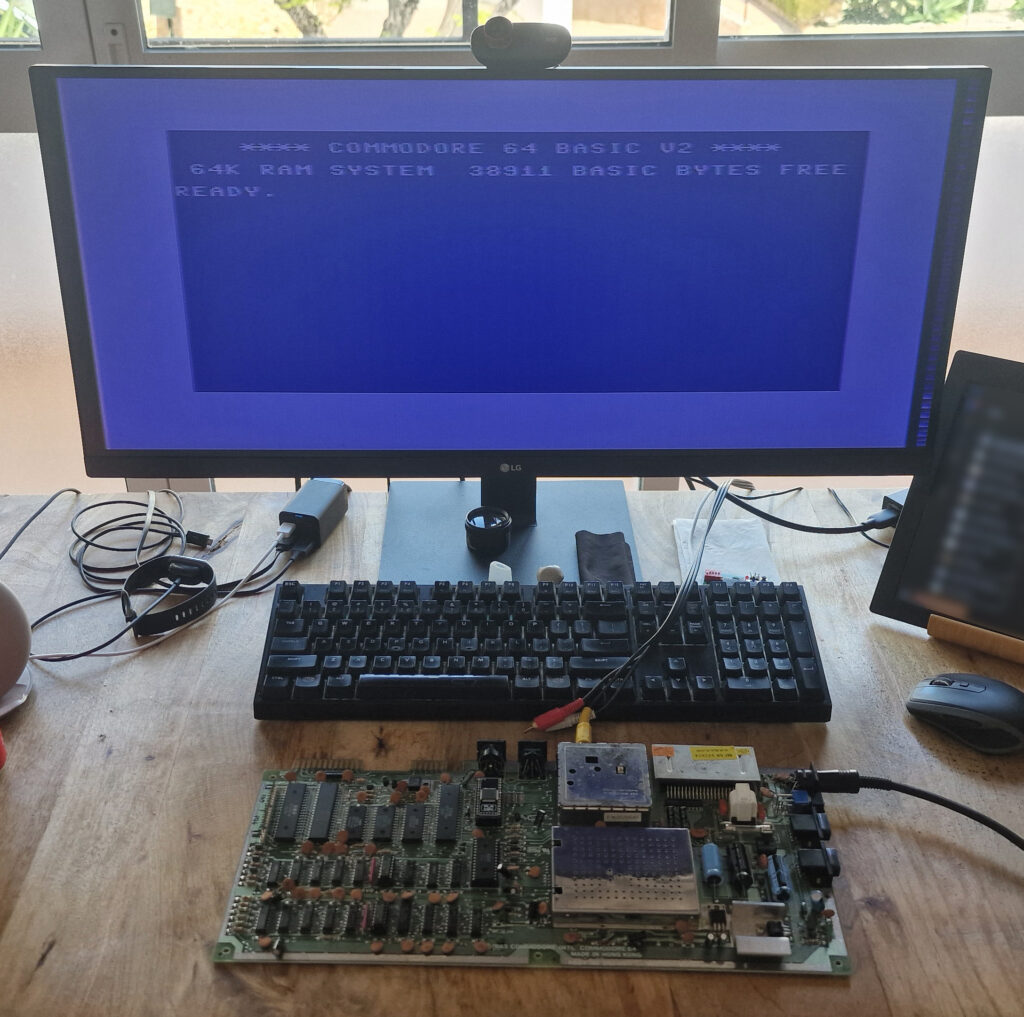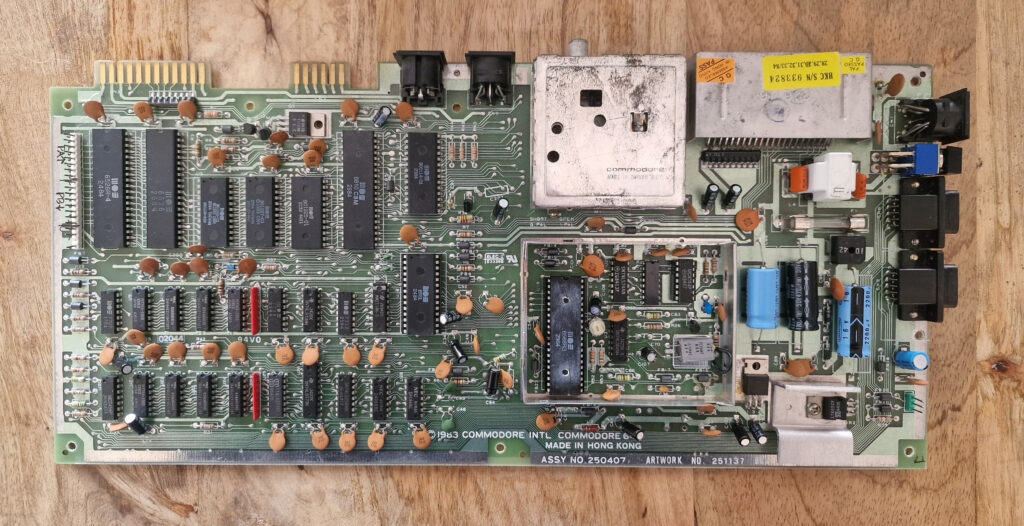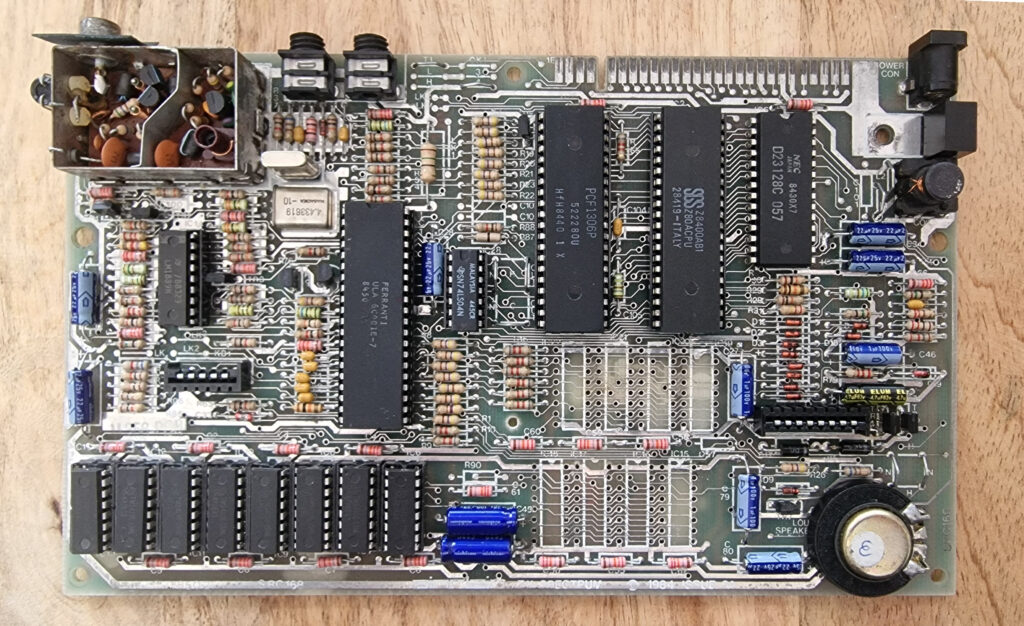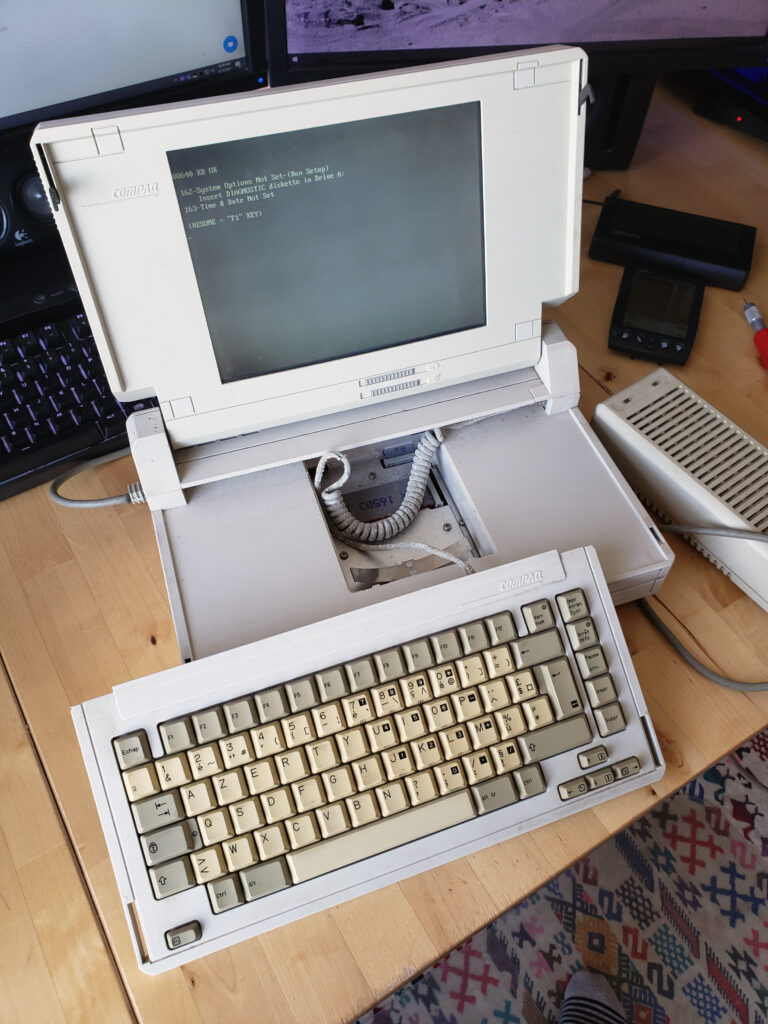Compaq SLT/286 Tear Down and RTC Real Time Clock Battery Fix
A good while back, I picked up a somewhat crusty Compaq SLT/286 “portable” with an azerty keyboard for $20. The owner sold it saying that the laptop wouldn’t fire up, the power supply just blinked a green LED, and that was it. I was just happy to add a 286 to my collection, and for the of fun trying to bring it back to life!
Well, today I found a folder on my phone with all the pictures I took so that, a) I could put the damn thing back together, and b) for that big long article I was going to write about the fix process. (haha)
Instead… Here’s a 65 image pictorial, with some random comments and links thrown in.
Commodore C64 Quick RF to Composite Video Mod

When I got my C64, it did not come with a power supply or video cable. A friend loaned me a power supply, but I had to wait weeks for my video cable to arrive from eBay. In the meantime, I was struggling for a way to get video, until I found this page shows the pinouts for the C64 AV connector. Helpfully, pin 4 on this connector is a composite out signal! So I made this quick video mod, to get composite video through the RCA RF jack on the back of the C64 while I waited for my AV cable to arrive.
Commodore 64 Repair

While I wait for parts for my recalcitrant ZX Spectrum, I turned my attention to a sick Commodore 64 bread bin model 250407 that I picked up from a friend. As with the ZX, this C64 doesn’t boot at all. No black screen with the white line on the left, just… nothing.
At least this C64 does not look like it had any work done internally. The soldering on the bottom looks factory, and there’s no messy flux residues. Both the SID and VIC chips are socketed, but I think this generation all came this way.
I have a loaned power supply for this board, which is a dodgy original outputting 10.6VAC on the 9VAC line, and +5.2V on the 5V DC line. Not great, not terrible, and it’s definitely going to be replaced with a modern version down the line. For now, and for testing, it will do…
HP 95LX reassembly video
This video shows how to reassemble an HP 95LX pocket computer from 1991. The video provides detailed instructions for returning your 95LX from parts to a working unit.


